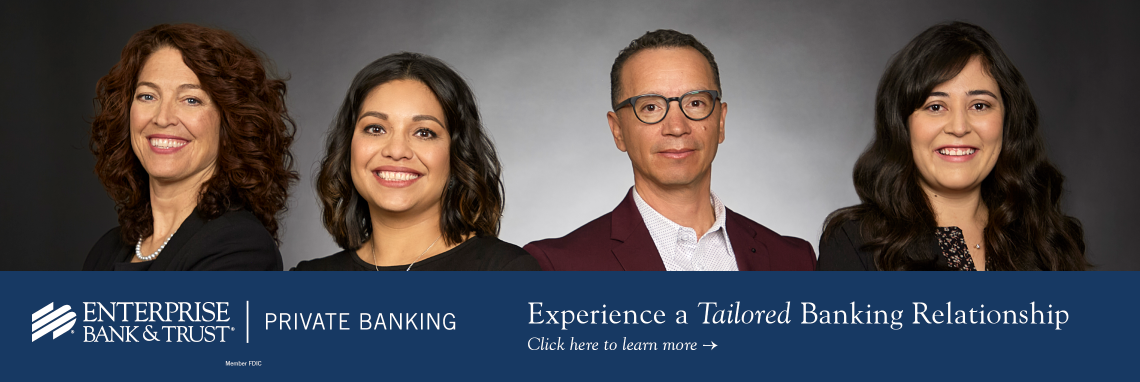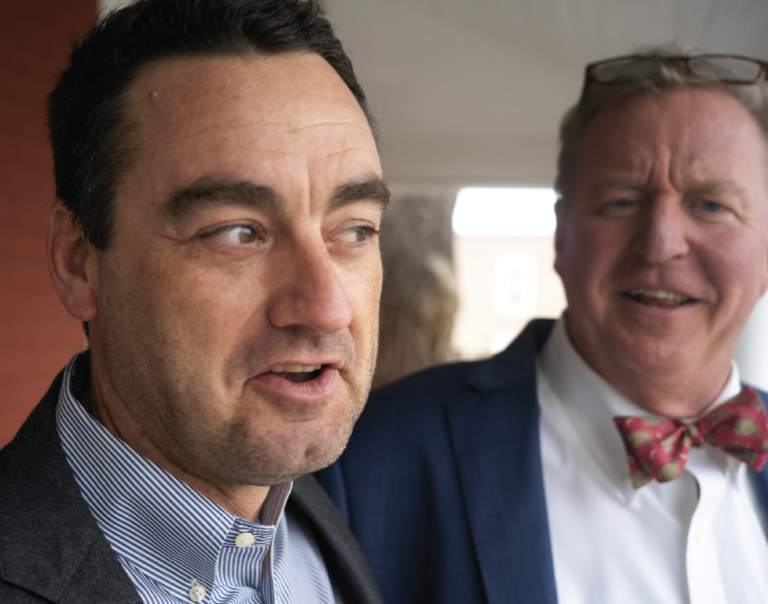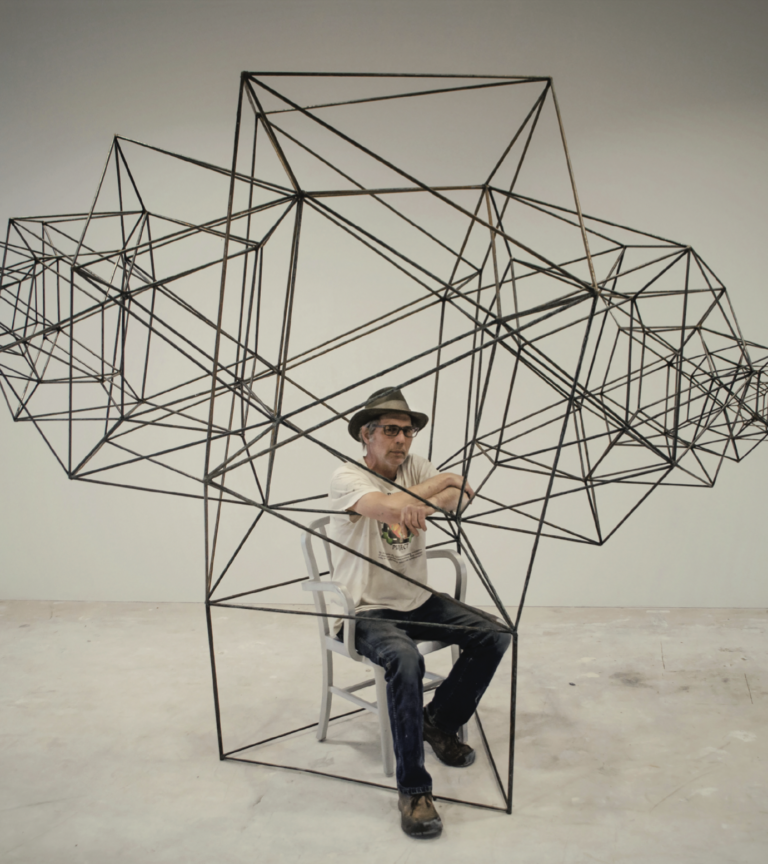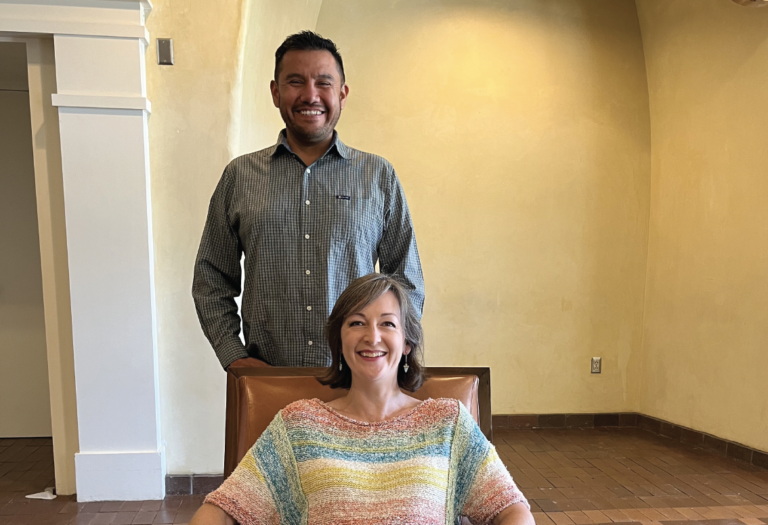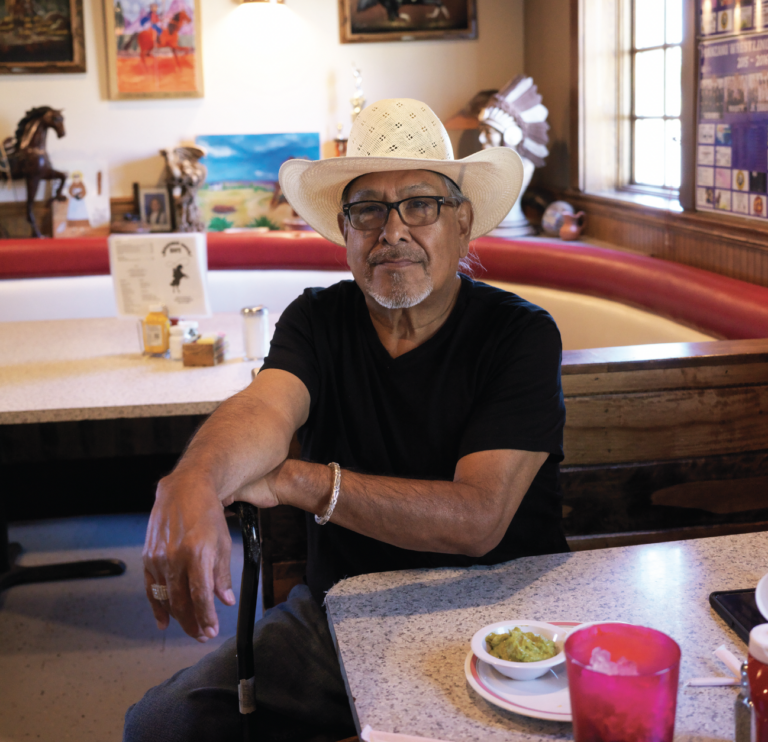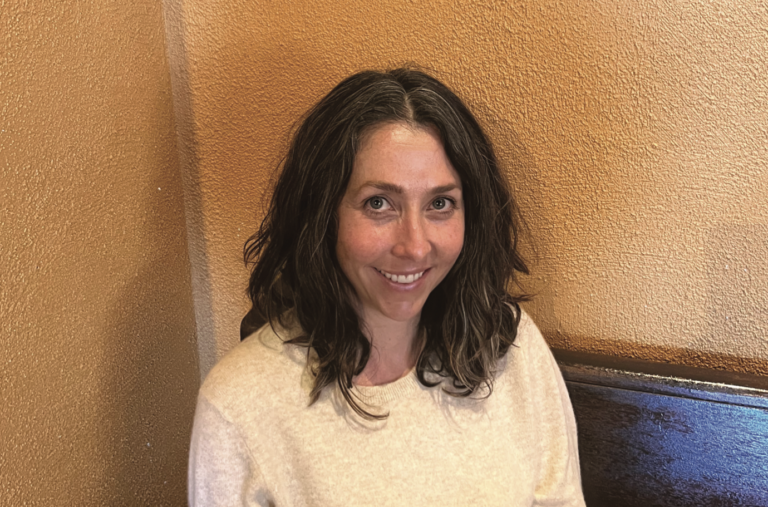IF YOU GET LUCKY SOME SUMMER EVENING, you’ll wander into a place called Reunity Farms. You may hear the mellifluous music of David Berkeley and friends who often perform there. You will see acres of lush, meticulously kept gardens where they raise a variety of indigenous corn, squash, melons, amaranth. You can’t take your eyes off the impossibly large sunflowers.
There is an orchard with kids climbing, playing, doing art during their Summer Farm Camp. The kids are all dirty in their summer overalls, which is how kids should look and be in the summer. One delighted kid yells, I found worms! You can see the towering pile of dark, fecund soil which they sell and in hearing about its richness, you understand why they call it black gold.
If you go in the evening, you can order food from their farm kitchen, and watch the setting sun at picnic tables outside. There is no other place like it in all of Santa Fe.
The couple responsible for all of this, Juliana and her husband Tejinder, started the farm with no capital, boundless optimism, a big idea, and a willingness to get their hands dirty. Actually, very dirty.
What was the inspiration for this place?
I would actually kick that to my husband. He was living in LA doing a lot of yoga and meditation, and got this kind of clarity like, I’m supposed to do what I can to build sustainable community, and that’s gonna happen in New Mexico. Pack the car.
What was the idea?
Reunity started with the concept of circular economy, circular systems, closed-loop systems. He took these biofusion classes and was simultaneously working for this other non-profit called the Santa Fe Alliance. He was tasked with creating a farm-to-restaurant program, connecting local growers with restaurants and markets. So he’s learning biodiesel and meeting all these farmers and restaurateurs, putting the pieces together and thought, wait a minute, I need cooking oil to make the biodiesel.
Meanwhile, I was always one of those annoying kids like, Dad, you gotta wash out the peanut butter jar! Environmentalism was always in me. Like, how do we re-connect to the earth, to each other, and not do so much damage? Maybe we can even repair some damage?
For instance, is there something we can think of that is environmentally sustainable, but also could be economically sustainable? Like used cooking oil. It is a commodity and cycles with the market. What if we could start collecting used cooking oil from restaurants for free and then sell it at its market price? There’s one certified producer in the state. Making biodiesel is just like making brownies. You can be a great baker but you can’t sell your brownies at Whole Foods unless you get some licensing, get some permitting, put it in a commercial kitchen. Same with fuel except more so, because it’s fuel. It’s got to be safe, tested and road taxed. And if you want to scale it, you need an industrial facility.
I said, well, let’s try this biodiesel thing. Can we do this in a way that it becomes a job? Can we do this in a way that it makes a difference and it’s not just spend a few weekends being weird people?
When we started, it was like, can we borrow a truck from a friend? Sure. Can we spend $200 on a big tank? It was very scrappy. This is valuable if you’re looking at it the right way, but you also have to be willing to do a job that no one else will do.
Used cooking oil is nasty stuff and a nasty job.
And pretty much everything we did up until that point was like nasty back alley business. And we’re still doing this program today. We collect it, stockpile it, and every few weeks they come with a tanker and haul it away.
What are the working systems at Reunity?
We have relationships with about 30 restaurants and about 25 to 30 schools and institutions where they’re producing food. They put the food waste in a green bin, trash in a black bin, and their recycling in a blue bin. Then, three days a week two guys in a big furniture truck go out to each of them and swap out full buckets, full bins, for clean, empty ones.
They come back with about 30 bins on the back of this truck, dump it off the back into a pile. Some of these bins weigh like 300 pounds. Frito pie leftovers, lime rice, you name it.
We get wood waste hauled in from the city to create our recipe for great compost. So the food waste gets dumped, wood waste gets mixed in by front loaders, like a big cake. Then we use what’s called an aerated static pile system. So we mix it up well, the waste, and we’re pushing the air with managed temperatures and moisture content. It cooks like that for four weeks. After that, the front loader comes and puts it in another pile. And it sits there in that pile for another two months. We call that curing. It takes that long for the pile to cool back to ambient temperatures.
Next, we screen it with basically a giant, expensive industrial sandbox sifter. The little stuff is ready to go in the garden and the big stuff goes back into the cycle to further break down. A banana peel is going to break down much faster than a chicken bone. And so then that compost is ready to go out the door. We divert about a million and a half pounds of food waste a year to create this organic soil amendment, all on about an acre of land.
Your other projects are a farm and a camp.
The farms can have revenues that get invested into growing food in a regenerative way. It lets us provide free field trips for public school children. We host tons of trips for Pre-K through college, and adults too. And with our camps, last year – I’m pretty sure we offered 157 scholarships out of about 320 camp seats.
The two abiding principles, it seems, are that it be self-sustainable, and that what you’re putting in ultimately stays in, so its economically self-sustaining.
Yes, it’s a balance. Some of the programs that are the most important to our work are money losers. But the most fundamental thing we do is grow food
and give it to people. The sad fact is farming is a risky and economically de-incentivized proposition, but it’s so fundamental to human resilience.
Why is it risky?
Climate change. First of all, every season gets weirder and weirder. But I would say it’s risky everywhere because of the economics of food and historic marginalization in farming. Either you’re big conventional ag and you’re getting government subsidies and it’s throwing things out of balance because now we’re growing 20,000 acres of corn with all kinds of chemicals, blah, blah, blah, or your farm is subsidized by the fact that you inherited your land.
The USDA stats show over 90% of small farms – less than 500 acres – get the majority of their income from off-farm sources. Your partner has a salary job, they work in tech, and so you can be a farmer that loses money.
Now that you’ve created this thing, what do you think now?
We always had this vision of let’s create a replicable model. When we really look at climate change resiliency and how much soil we need to be sequestering carbon to balance out pools on the planet, it’s just millions of acres. So how do we plant good seeds so that that work can happen on that scale?
We’ve really chewed on this idea of, is this a replicable model? Yes and no. Every location and every set of conditions is so different. There might be parts of it that are replicable and parts of it that are not.
So, what I’m interested in, rather than saying this is a replicable model, it’s like, actually, this took 12 years. We’re about 85% revenue generating and 15% fundraising based. We wouldn’t be here without that 15% or we would be here but we wouldn’t be doing important programs like food donations and scholarships.
When we’re talking about, we need more farmers, which we do, and we need more land in regenerative ag production, which we do, it can’t be this wide-eyed, I’m going to connect with the earth and be supported hippie narrative that I held on to for a little too long myself.
I would love some completely different overarching socioeconomic system, but we’re where we are. Everybody’s got to pay rent, and everybody’s got to buy groceries, and everybody’s got to pay health insurance. You can’t have an all-volunteer operation and succeed. You’ve got to be able to take care of your people, take care of them long-term, and take care of the land long-term.
What makes you want to keep doing this, even if it isn’t repeatable?
The kids. We started Farm Camp in 2021. It was the pandemic and the kids were not in school. Even outdoors, everybody was masked. But these kids were starved for each other. They were starved for structure. And they were starved for basic social emotional skills. So we went into that year going, okay, we’ve got a farm curriculum and we’re going to make food and we’re going to make art and we’re going to learn about pollinators and plant identification and how things grow. One of our favorite activities is the salad party where we toss a salad with a parachute. Of course, we’ll practice before we put in a salad mix in a giant parachute that 30 kids are holding.
Maybe it isn’t replicable, but we’re just rife with planting metaphors. How do we plant good seeds? For me, educating the little ones is always gonna be what gets me up in the morning.
Learn more at ReunityResources.com
Photo SFM

